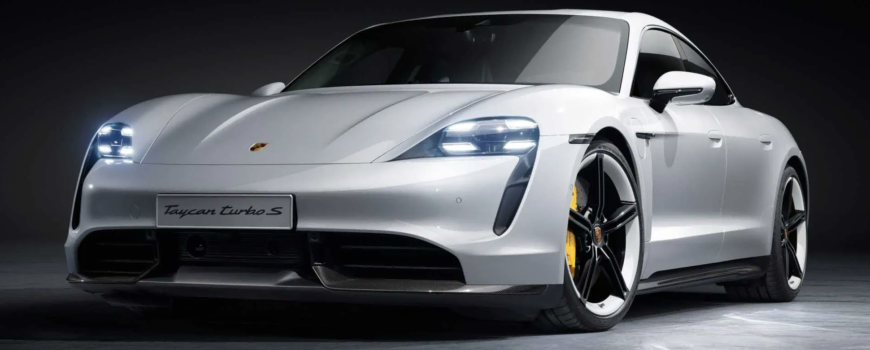Porsche Taycan Outsells Porsche Turbo
Porsche’s electric Taycan has outsold the 911 combustion-era flagship for the first time, according to a recent report. Perhaps Porsche enthusiasts finally realized that the 911 looks pretty much the same as it did in the 1960s and they’re sick of it. This is kind of a big deal, actually.
If you’re not a Porsche-phile, here’s a quick rundown of the different 911 offerings since the first 911 was released in 1964.
The first 911 was released in 1964 and carried on in one version or another until 1989
https://www.youtube.com/watch?v=I727ftJTT5Q
The 911 went through minor upgrades with the release of B,C D E and F variants over the years. and changes from 1964. These changes were relatively minor (usually), including lighting, trim pieces safety upgrades, equipment upgrades and so on.
The first Porsche turbo arrived in 1974 using a 260hp flat six engine.
https://www.youtube.com/watch?v=LMnV_3KHK6c
The famed and treacherous 930 turbo arrived in 1975 and continued on until 1989. This car didn’t suffer fools. Boost lag gave way to sheer terror and rapid changes in the lateral axis, earning it the nickname “widow maker.”
The next generation was the 964 and it ran from 1989–1994
The 993 followed and ran from 1995 to 1998 and it was the last air-cooled 911.
Its successor, the 996 went on sale as a 1999 model and featured an all-new body and a water-cooled. The 996 ran from 99 to 2004. I had the pleasure of owning one of these cars, and it was a solid performer that could be driven every day.
https://www.youtube.com/watch?v=9RWIT3vE4G4
The 997 followed in 2005 and ran until 2012. IMHO, this car was the most boring, looks-wise of all of the 911s.
https://www.youtube.com/watch?v=NrybZk3_ChU
Someone at Porsche can’t count, because I’m still trying to figure how Porsche went from a 997 to a 991 in 2012 when the new body style was released. This iteration was a completely new platform, built mostly from aluminum.
The 991 was introduced in 2012 and was essentially a re-bodied 911. This car was finally coming into its stride. https://www.youtube.com/watch?v=NFd2AXCzxsg
The 992 (2019) designation was odd, considering Porsche started marketing the non “S” version as the 992, which I found confusing. German car manufacturers are very good at creating confusion about their cars by assigning model numbers based on abstract logic. Despite the fact that the 911 retains its basic silhouette, it is evolved into a car with few equals.
Sales of the 911 have been strong and in the first nine months of 2021, there were 27,972 911 Turbos sold. In that same period, Porsche sold 28,640 Taycans.
This is kind of a big deal. Why? Because Taycans are far different than the 911 Turbo.
The 911 Turbo aka the 991.2 offers 572 hp and 553 lb ft of torque from its 3.8L twin turbo flat six. If you opt for the 991.2 Turbo S, you’ll get 640 hp and 590hp. The base Turbo will set you back $180,000 before options and the Turbo S will bump that price to around $210,000.
The Porsche Taycan is 100% Electric
The Taycan’s stats are more impressive and you’ll spend less. The Taycan is 100% electric…it’s not a hybrid…it runs on batteries. The range has been independently tested and the numbers reveal that it can achieve 200-225 miles in combined city-highway tests and 280 miles at 75 mph on the freeway.
The Taycan 4S with Performance Battery Plus takes base output to 360 kW, which equates to 482 hp. Overboost mode takes battery output to 420 kW, equivalent to 562 hp and 479 lb-ft of torque.
In case you haven’t guessed, the performance stats of electric cars rival their internal combustion-engined rivals. And the Taycan is no exception. Total power outputs for the Taycan lineup are up to 522 HP (Taycan 4S), 670 HP (Taycan Turbo), or 750 HP (Taycan Turbo S) using Overboost Power with Launch Control. Taycan Turbo S models can accelerate from 0 to 60 MPH in a blistering 2.6 seconds using Launch Control on their way to a top speed of 161 MPH.
For the 2021 model, range is EPA-rated at 227 miles.
The above tests were done using their optional 83.7 kwh Performance Battery Plus which is a $5700 option. It should be noted that the Taycan 4s, will only get about 180 miles of range, largely because of the weight of the all wheel drive system. Only Tesla’s Model S Long Range car beat that range number.
When it comes to electric cars, my feeling is that the range should outlast the average human’s bladder capacity or at least equal what I’d get driving my R35 GT-R, or Porsche Turbo or any number of the current crop of modern muscle cars like Camaro, Mustangs and Dodge Hemi cars. I feel that electric cars would have to provide greater acceleration and range surpassing their predecessors.
The Taycan checks all of these boxes with one caveat: instead of filling up the tank in 5 minutes, filling up the batteries will take you 9.2 hours.
Prices start at around $80,000 but a reasonably optioned version will set you back about $100,000 and change.

